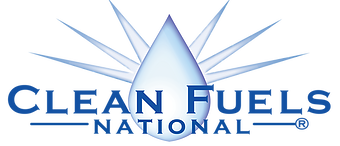
For example, equipment currently in use at the majority of convenience stores nationwide are rated for renewable fuel blends up to—but not exceeding—ten percent. Further, according to the National Association of Convenience Stores’ 2013 Retail Fuels Report, the vast majority of retail stations do not have equipment that is legally UL-certified and, therefore, cannot, by law, sell anything to consumers higher than E-10. This means pumping E-15 fuel through existing equipment runs the service station the risk of equipment damage, or, from a bottom line standpoint, necessitates the installation of brand new equipment. In other words, old equipment cannot be certified as E-15 compatible, thus new equipment would have to be purchased. And, as stated earlier, causes a financial burden many—if not all—stations are just not prepared for as a single fuel dispenser costs upwards of $20,000. Moreover, failure to demonstrate compatibility with this measure violates the EPA’s UST regulations and might also violate UST insurance regulations as well.
Along those same lines, in a 2010 study entitled “Dispensing Equipment Testing with Mid-Level Ethanol/Gasoline Test Fluid,” Kenneth Boyce and J. Thomas Chapin of Underwriters Laboratories performed compatibility tests on various materials and fuel-pumping equipment with E-15. In the study, both new and used equipment were tested with the primary focus of identifying leakage issues. Quoting the study: “Shear valves, flow limiters, submersible turbine pumps, and hoses generally performed well.” However, later in the study, the results are not so encouraging:
“Some new and used equipment demonstrated a reduced level of safety or performance, or both, during long term exposure in the performance tests. Dispenser meter/manifold/valve assemblies, in particular, demonstrated noncompliant results. Nozzles, breakaways, and swivels, both new and used, experienced noncompliant results during performance testing as well. Responses of non-metals, primarily gaskets and seals, were involved in those noncompliance findings."
In other words, equipment rated for E-10 simply does not hold up under the more corrosive conditions created by E-15: some of the worst possible findings the report could have verified.

In addition to the logistical hurdles created by equipment noncompliance, there are problems on the consumer end as well. Several automotive manufacturers, including BMW and Subaru, have stated that the use of E-15 fuel in any of their vehicles will void their vehicles’ factory warranties. While some vehicle manufacturers offer “Flex Fuels” as an alternative, vehicles that can tolerate higher ethanol blends, notably E-15 and E-85, are not always a completely viable option. Additionally, according to the EPA, vehicles older than 2001 are incompatible although several vehicle manufacturers—Ford for one—have argued only much newer vehicles are compatible, 2013 and later. In addition to being incompatible with older vehicles, E-15 may never be used in small engine motors like snowmobiles, lawn mowers, trimmers and the like. What’s more, higher ethanol content spells lower gas mileage on the whole, thus driving down the overall consumer demand for E-15 fuel.
In conclusion, we have legislators and farmers advocating for increased levels of ethanol in fuel, while, at the same time, those in the retail fuel and automotive industries urging patience. Without question, we all desire the prospering of American farms and at the same time protecting the environment in which we all live. But, that said, changes must be made. And let’s collectively hope those changes are made in the not-to-distant future with appeasement achieved on both sides of the issue.























